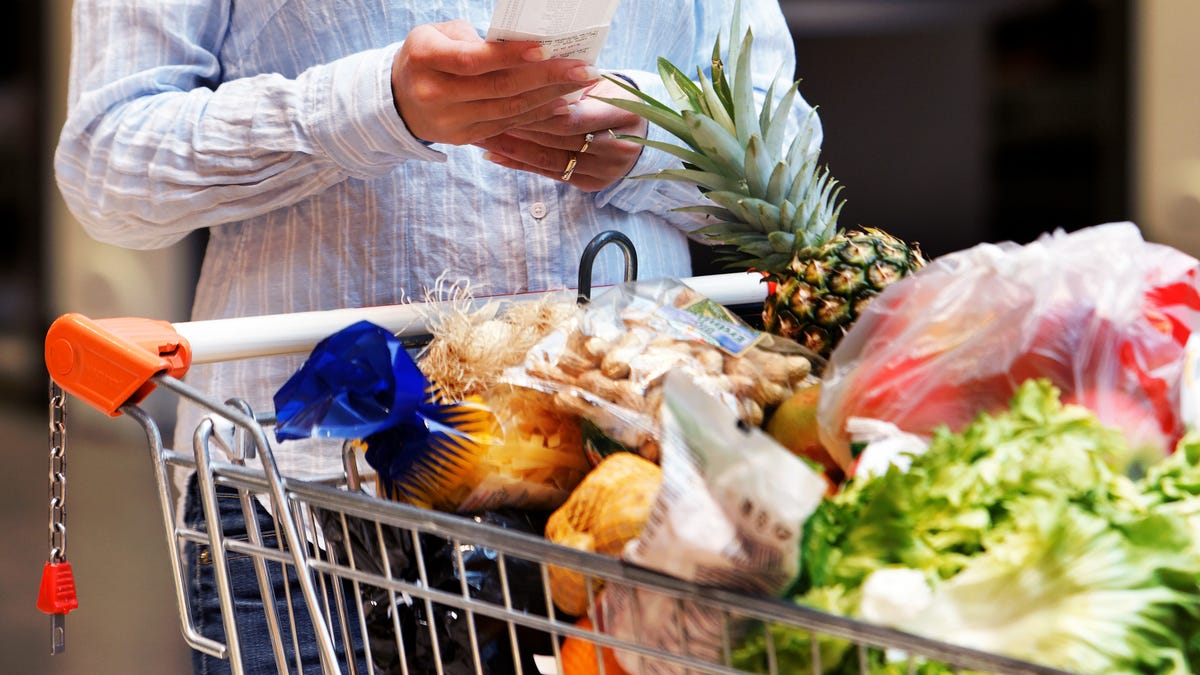Enhanced SNAP Benefits for Millions of Americans Are Gone. Here's What You Need to Know
Extra SNAP payments added under a pandemic-era policy have been cut, reducing monthly grocery allocations for recipient households by $95 or more.

SNAP benefits reverted to pre-pandemic rates for all recipient households on March 1.
The Supplemental Nutrition Assistance Program helps more than 41 million Americans cover food essentials. But pandemic-era enhancements to SNAP, formerly known as food stamps, have expired nationwide.
As a result, monthly benefits for March dropped by at least $95 for all households, with some seeing a reduction of $250 a month or more, according to the Center on Budget and Policy Priorities, a progressive think tank.
The cuts come as US families continue to face food inflation: Supermarket prices in January were 10% higher than at the beginning of 2022, according to the Bureau of Labor Statistics.
Expanded SNAP benefits kept 4.2 million people above the poverty line at the end of 2021, according to the CBPP, disproportionately Black and Latino people.
Read on: How You Can Save $75 a Month on Your Internet Bill
What was the increase to SNAP benefits?
Temporary SNAP emergency allotments, or EAs, were originally approved by Congress in March 2020, shortly after President Donald Trump declared a COVID-19 public health emergency. As part of the larger stimulus package, EAs provided an additional $3 billion a month to SNAP.
States could request the extra funds as long as they had an emergency declaration in place and the federal public health emergency was still active.
But Congress closed the purse strings in December 2022 as part of the Omnibus Appropriations Bill. By the end of January, 18 states ended their declarations and stopped issuing emergency allotments.
For the remaining 32 states -- as well as the District of Columbia, Guam and the US Virgin Islands -- February was the last month for the expanded benefits.
President Joe Biden has announced the federal public health emergency will expire on May 11, 2023.
How do the change in SNAP benefits affect recipients?
One in eight Americans receives SNAP benefits. While the amount each household will lose depends on its size, makeup and income, all will see a decline of at least $95 a month.
Families with children are losing about $223 a month on average, according to the CBPP, and people 60 and older are facing an average decrease of $168 a month.
Many Social Security recipients have seen an additional drop in SNAP benefits because the 8.7% cost-of-living increase to Social Security in January raised their overall income.
Other changes to SNAP, including expanded eligibility for low-income college students, will expire in May when the federal public health emergency ends.
Who is eligible for SNAP benefits?
To qualify for SNAP benefits under the US Department of Agriculture, your gross monthly income generally can't exceed 130% of the poverty line. For a family of three in the fiscal year 2023, that equals $2,495 a month, or just under $30,000 a year.
Your net income must be at or below the poverty line and assets for most households must be no more than $2,750. (Households with a senior or disabled person must have assets of $4,250 or less.)
Adults under 50 who are not working and do not have children at home are limited to three months of SNAP benefits every three years. That requirement was paused during the pandemic but goes back into effect in May.
How do you apply for SNAP benefits?
You must apply for SNAP in the state where you reside. The USDA Food and Nutrition Service website has links to state agencies and online applications, as well as relevant phone numbers for each area.
SNAP benefits are deposited onto an electronic benefit transfer card accepted at most supermarkets.
How much can you get in SNAP benefits?
While the emergency allotments are ending, changes to howthe USDA calibrates the Thrifty Food Plan, which is used to calculate SNAP benefits, gave the average recipient an extra 27% beginning in October 2021. The agency added a 12.5% cost-of-living increase in October 2022. Another adjustment is expected this fall, NBC News reported.
For now, a single person can expect to receive an average of $197 a month, with a maximum payout of $281. The average monthly benefit for a household of three is $586, with a monthly maximum of $740.
SNAP benefits*
| Household size | Estimated average monthly benefit, fiscal year 2023 | Maximum monthly benefit, fiscal year 2023 |
|---|---|---|
| 1 | $197 | $281 |
| 2 | $377 | $516 |
| 3 | $586 | $740 |
| 4 | $718 | $939 |
| 5 | $842 | $1,116 |
| 6 | $981 | $1,339 |
| 7 | $1,062 | $1,480 |
| 8 | $1,282 | $1,691 |
| Each additional person | $211 |
*Source: cbbp.org
SNAP recipients can contact their state social services agency if they recently lost income or if their expenses have increased due to housing, child care, medical expenses or other factors.
You can also connect with area food banks and relief organizations for additional resources.
Correction, Feb. 28: A previous version of this story misstated the number of remaining SNAP recipients who would lose their expanded benefits on March 1.

